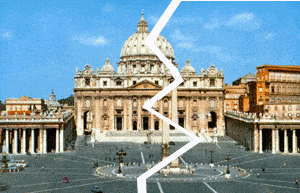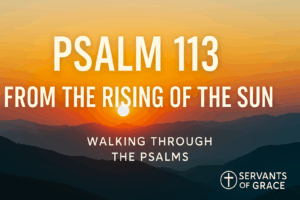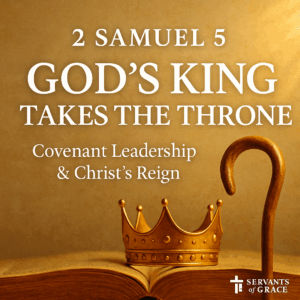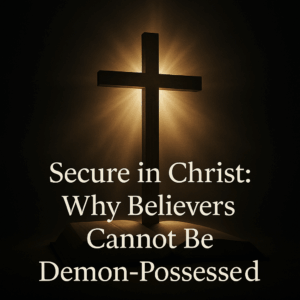⏱️ Estimated Reading Time: 19 min read
Historians often pinpoint the fracture of the Christian Church to 1054 A.D. It is easy to apply such a label when members from the Eastern and Western churches were excommunicating each other. There is a definite act in a definite place at a definite time for historians to latch on to. But the act was symbolic of an already apparent split, a split that had been widening slowly over centuries. The final and formal split between the East and the West occurred slowly over time, long before 1054, and was primarily the result of cultural and intellectual differences. Any points of dispute, which will be addressed, only reflect the cultural or intellectual differences between the Latin-speaking Roman Church and the Greek-speaking Orthodox Church. The actions in 1054 only externalized an internal schism that was already in place.
Cultural Differences
One primary cultural difference was language. The Empire, when under one Emperor, spoke and wrote in Latin. But the East spoke in Greek. It was steeped in Greek traditions and “never ceased to regard the western empire as foreign, barbarous and intrusive.”1 The Greek-speaking part of the Empire made no attempt to learn Latin and it had no use for its thought. After all, the patristic books and letters were all in Greek.2 Everything the West had, came from the Greek. This thinking was solidified in the seventh century when Greek became the official language of the Eastern Empire.3
The West also tended to reject Greek thought with respect to theology. The Greeks tended to be more mystical and speculative, and emphasized worship and piety. The East looked to Origen, Athanasius, the Cappadocian writers, and other mystical theologians. They focused on free will and a synergistic view of salvation. They took a philosophical and metaphysical approach to theological questions, and enjoyed theological debates. Primarily the West looked to Augustine for its doctrines, emphasizing grace and a proclivity towards monergism. The West focused on theological issues that were more legalistic and practical, and had a strong emphasis on authorities of written codes. This is probably because the barbarian tribes around them would constantly invade, and pastoral issues would occur frequently. The East and the West had such different views and outlooks upon things that F.G. Cole says, “Neither looks quite in the same way on God, man, life and destiny.”4
The cultural differences and the two different schools of thought are the primary roots of the points of dispute that lead to the act of 1054. These points of dispute would manifest themselves in ecclesiastical authority, theological issues, and liturgical issues.
Ecclesiastical Authority
Constantine moved the capital of the Roman Empire to Constantinople and by doing so began to sow political differences between the East and the West. Power shifted from Rome to Constantinople and with it societal changes began to occur over time. Lynch says, “The Byzantines did not call themselves ‘Byzantine’….They regarded themselves as Romans and indeed they were the heirs of the old empire, although such major changes had occurred that a second-century Roman emperor would have had difficulty recognizing his seventh-century successors and their empire.”5 These changes would begin to impact the church in the East.
With the Emperor’s involvements in the Ecumenical councils, the Eastern Church, in a sense, came under the power of the Empire, for better or for worse. There was a centralized authority, and protection from invaders (although Muslim advances began to weaken the Empire). The see at Constantinople believed it should be no less supreme than the imperial throne. Eventually it began to use the term “ecumenical” to describe its patriarch. It meant, that the “patriarch of Constantinople was supreme wherever the eastern emperor’s writ ran.”6 Implicitly, then, this included the West, where Rome lay, because the Emperor laid claim to lands in the West. Naturally, Rome took issue with this claim. Rome believed it held an apostolic tradition reaching back to the reign of Nero, and a place of supremacy among the apostolic sees, of which Constantinople was not. Constantinople was an upstart; its patriarch didn’t come into existence until A.D. 381. In Rome’s eyes, it could not claim any sort of ecclesiastical see, let alone supremacy. This is because Rome based its claim on spiritual supremacy through the Apostle Peter on two accounts. Rome appealed to Matthew 16:18, where Jesus tells Peter he will build His church upon this rock, and that the keys of heaven will be given to him. The second appeal through Peter is that in the year A.D. 42, “by way of Corinth to Rome, he became bishop of the Roman Christian community for twenty-five years, and was martyred about the year A.D. 67.”7 Therefore Constantinople must submit to Rome. However, the East saw Rome as one see of Christendom attempting to dominate the rest without cause. The East interpreted the rock in the Matthew passage as Peter’s faith, not Peter himself.8 Therefore there was no correlation between Peter being the first bishop of Rome and Rome’s supreme authority over all Christians. All orthodox bishops were true successors of Peter, not just those in Rome. Eastern Orthodox theologian John Meyendorff said, “The whole ecclesiastical debate between East and West is thus reducible to the issue of whether the faith depends on Peter, or Peter on the faith.”9 This ecclesiastical issue would continue for centuries long before the events of 1054 occurred.
Filioque
An ecclesiastical issue and a theological issue come to a head in the controversy of the filioque clause. Filioque is Latin for “and the Son”, and this phrase was apparently added to the original Greek version of the Niceno-Constantinopolitan Creed of 381. The Eastern bishops in Constantinople rejected it for two reasons. The first was theological. The East’s theological thoughts on the Trinity were to emphasize the monarchy of the Father, “so that both son and Spirit find their source, principle, and cause eternally in the Father.”10 The East cited John 15:26, “But when the Helper comes, whom I will send to you from the Father, the Spirit of truth, who proceeds from the Father, he will bear witness about me.”11 The Western idea of “and the Son” seemed to imply that the Spirit finds its “source, principle, and cause” in the Son as much as in the Father. This means that the Spirit is a son of the Son of God, even as the Son of God is the Son of the Father.12 The East viewed this as a distortion of the Trinity and declared it unorthodox, as it did not do justice to the distinctness of the three persons. Photius of Constantinople spoke out against the filioque:
Above all else, there is a saying of the Lord which opposes them like a sharp, inescapable arrow, striking down and destroying every wild beast and fox as though with a thunderbolt. What saying? That which the Son Himself delivers; that which states that the Holy Spirit proceeds from the Father.13
The West emphasized the oneness of God within the three distinct persons of the Trinity. The Holy Spirit was the bond of love between the Father and the Son. The Spirit is the bonding principle and “in a sense, ‘comes forth from’ Father toward Son and Son toward Father. It would be natural, then, to say that the Spirit is sent into the world by both Father and Son.”14 The West argued that in John 15:26 Jesus sends the Holy Spirit because this supports the bond of love and the “intratrinitarian relationship.”15
Clearly, both sides were not agreeing upon a central doctrine of Christianity. Long before 1054, the two ideas of the Trinity were incompatible and the internal divide was already present. The filioque debate highlights the distinct approaches taken by both Latin and Greek church to address the issue. This was not an academic debate, because a belief in an unorthodox understanding of a central Christian doctrine could place one outside the Church. An orthodox understanding of the Trinity was at stake in the debate and the West argued that the filioque was a “clarification added to defend the faith against error, something never prohibited by the fathers.”16 Even if it were a clarification, the East argued that the West had no right to amend an ecumenical creed. This was the second point of contention regarding this controversy.
Edward Siecienski says if, as the West argued, the filioque was orthodox, “then its use in the creed to clarify the Church’s teaching on the matter of the Spirit’s procession was therefore not a violation” of an ecumenical creed.17 The West also believed that the pope had a right, granted to him by Christ, to alter the creed.18 The East maintained, even if the filioque were orthodox, Canon 7 of the Council of Ephesus prohibited its addition.19 The canon reads: “It is not permitted to produce or write or compose any other creed except the one which was defined by the holy fathers who were gathered together in the holy Spirit at Nicaea.”20 Therefore no one can alter the creed, neither the pope nor another ecumenical council.
No one knows who added the filioque or when. It was common around monks in the West and was officially added to the Latin translation of the creed by a synod in Toledo in 589.21 The addition reached Constantinople sometime in the mid ninth century, still some two hundred years before 1054, and almost 300 years after the first officially recognized change in the West. Obviously Greek and Latin thought had been misaligned for centuries on ecclesiological matters, theological matters, and as will be shown, liturgical matters.
Liturgical Differences
Naturally, different theological understandings would work themselves out differently in practices of liturgy. Rome preferred an almost “business-like” terseness; Constantinople delighted in “diffuse poetical rhapsodies interspersed with prayer.”22 Priests in the West were held to celibacy, while the lower clergy in the East could marry, but not remarry.23 Priests in the East were prone to wear beards.24 Beginning around the fifth century, Western priests would shave, largely arising from monastic influences.25 The Greeks reprimanded the Latins for “their dietary habits, for failing to sing ‘Alleluia’ during Lent, and for fasting on Saturdays.”26 The Greeks viewed fasting as a “reversion to the Jewish Law.”27 These practices should remain with the Jews, said the Greeks, because they remain ignorant to the light of Christ. The East allowed its laity to partake both of the cup and the bread in communion, but in the West lay people only partook of bread.28 This final issue regarding taking bread in communion would become a significant point of debate between the East and the West.
Unleavened vs. Leavened Bread
In the Eucharist, the Eastern Churches used leavened bread, while the Latin churches, since the ninth century, used unleavened bread.29 The Latins “claimed that their use of azymes was justified on the grounds that Christ’s Incarnation was free from the corruption of original sin, ie. from the leaven of malice and wickedness.”30 The Latin Church equated leaven with sin, and cited Matthew 16:6 and 1 Cor. 5:6-8 to support their case. Erickson says that the Greeks extract an opposite meaning from the same Corinthian text. Two different meanings arise from translation issues, again highlighting the problems that could occur due to differing languages.31 Furthermore, the West pointed out that when Jesus instituted the Eucharist during his meal with the disciples, he was eating the Passover meal, and thus unleavened bread was used.32 However, the East was “less interested in the fact that Christ instituted the Eucharist than in the fact that Christ was the Eucharist.”33 For the “Byzantine church, unleavened bread was dead bread—no better than a rock—a symbolic denial in the Eucharist that Jesus had risen from the dead.”34 Mahlon Smith says, for the Greeks, “a Eucharist celebrated with azymes is the offering of a body without mind or soul: a dead rather than living sacrifice.”35 The Greeks believed the use of unleavened bread would deny the reality of the Incarnation, and felt the Latins were partaking in a Christological heresy.
One Greek writer wrote, “To employ bread without leaven is to imply that Christ was without a human soul and thus to fall into the heresy of Apollinaris.”36 This viewpoint comes out of the Greek emphasis on salvation as deification, or theosis. Their reasoning was that if man was to be fully divinized, Christ “must have been fully consubstantial to man, in body, mind, and soul.”37 Therefore, Christ in the Eucharist “must be fully consubstantial to man if the whole man is to participate in this divinity.”38
Salvation was at stake for the Greeks and they could not compromise their beliefs. It was very important to them and the primary point of dispute between the Latins. Erickson says, “the sole cause given for it [the schism in 1054] is the issue of the bread of the Eucharist.”39 A patriarch of Antioch wrote: “The chief and primary cause of division between them and us is in the matter of azymes…. The matter of azymes involves in summary form the whole question of true piety.”40 For the Greeks, unleavened bread could never be used in any Eucharist, and any Eucharist that used it, was not valid. In 1052, the Patriarch of Constantinople, Michael Cerularius, agreed with that conclusion, so he ordered the closing of the Latin churches and monasteries in the East.41
1054
Cerularius’s closing of the Latin churches was also a response to Norman suppression of Greek practices in southern Italy. In the early eleventh century, the Normans invaded southern Italy and Sicily. During this time, the “population of Calabria and the cities of Apulia was entirely Greek and directly ruled by governors dispatched from Constantinople.”42 Most people in this area with Greek ancestry worshipped according to the liturgy of the Eastern Church. They also looked to the patriarch of Constantinople for ecclesiastical leadership. But the invasion of the Normans changed all of that. The Normans were not tolerant of Greek customs, so they suppressed them and introduced Latin practices, by installing Latin bishops and taking over the revenues of the clergy.43
The church in Rome was not fond of the Normans, but Pope Leo IX, who was taken into house arrest by the Normans, did not object to the Latin practices, for why would he?44 Cerularius was no friend to Latin practices; in fact he was hostile to them, for he believed the Eastern Church “was the model for all Christians to approach God in the Liturgy and sacraments.”45 The Latin aggression against the Greeks in southern Italy confirmed his suspicions, therefore he closed Latin churches in the East.
After this, disputes and arguments over theological and ecclesiastical matters began to become more heated. Leo IX decided to send a delegate to Constantinople to “investigate the reason for the Greek charge that unleavened bread could not be consecrated and to negotiate the reopening of the closed Latin churches.”46 The delegate was also tasked to forge a papal-Byzantine alliance against the Normans who threatened both the pope’s and the emperor’s authorities. When the delegate arrived at Cerularius’s residence in Constantinople, the patriarch records that the delegation treated him with disrespect, not saying a word and thrusting the messages from the pope into his hands. After examining the documents, Cerularius claimed them to be forgeries, for their seal had been broken, and therefore the delegation had no right to act in the pope’s name.47
Whether the documents were forged or not, Cerularius was right about the delegation having no right, for the pope had died almost at the beginning of the delegate’s mission. Robert Morgan says, “Even though they knew of his death, the delegates continued to act in his name as if their powers were still in force.”48 Cerularius took his time to compose a response. He must have taken too long, because, after waiting weeks and hearing nothing from the patriarch, the delegation on July 16th, 1054, got fed up and laid an excommunication on the high altar in the Cathedral of Holy Wisdom.49 It did not excommunicate the entire Greek Church. Rather, the excommunication named three people, the Patriarch Cerularius, Archbishop Leo of Ochrid, and Constantine the sakellarios of the patriarchate, and their supporters.50 It listed sixteen charges against Greek practices most of which were liturgical or authoritative matters that had been disputed for centuries, such as papal superiority, the use of bread in the Eucharist, and the filioque. A few days later, a synod, called by Cerularius, responded by excommunicating the delegates and it too presented its own list of errors committed by the Latins. It did not excommunicate the pope or the entire Western church. However, actions by both sides precluded any papal-Byzantine alliance to combat the Normans in southern Italy.51
Conclusion
While the popular consensus in Christian circles is that 1054 marks the beginning of the split between the East and the West, the examination of the issues surrounding the isolated excommunications point to a split occurring long before. There were relations between the two sides after the event,52 and while neither side made much significance of the events themselves, it was apparent the events of 1054 highlighted irrevocable differences that were already in existence. The actions of the delegates and the patriarch Michael Cerularius illustrated the mistrust and hatred that had developed slowly over time. Is there a date to assign a formal split? Fahlbusch and Bromiley answer this when they say that “over a long period of increasing alienation, an antithesis between the two resulted, based on the absolutizing of the two forms, that constricted the faith and shattered all chances of agreement.”53
Certainly, both sides were to blame. The arrogance of Rome to assert authority over all other sees and to make changes to creeds without consent, and the arrogance of the Greek Church to insist upon the superiority of Greek language and customs, placed an enormous burden on the possibility of unity. One must not also underestimate the difficulties the language barrier presented in resolving disputes. While the two sides approached theological matters from different thought traditions, reconciliation in disputes could still be theoretically possible. However, if the two sides could not accurately speak to each other, there is no hope for compromise. Douglas writes, “Few theologians in East or West spoke the other’s language.”54
Furthermore, if the two sides could understand one another, contentions with issues that are steeped in centuries of tradition and thought usually turn to polemics instead of resolution. With all the legitimate pastoral, ecclesiastical, theological, and liturgical concerns both sides may have had during their centuries of slow divide, (which became externalized on July 16th, 1054 in one event of many throughout the centuries) an underlying theme could perhaps be found: the pride of men. Perhaps the widening split over time between the Roman West and the Greek East was God’s way of protecting His church from sinful man.
Bibliography
1 Romilly Jenkins, Byzantium: The Imperial Centuries, AD 610-1071 Parts 610-1071 (Canada: Medieval Academy of America, 1987), 350.
2 Ibid.
3 Ibid.
4 F. G. Cole, Mother of All Churches: A Brief and Comprehensive Handbook of the Holy Eastern Orthodox Church (Skeffington & Son, London, 1908), 27.
5 Joseph H. Lynch, The Medieval Church: A Brief History (Harlow, Essex, UK: Longman Group Limited, 1992), 21.
6 Ibid., 351.
7 Jenkins, 351.
8 Roger Olson, The Story of Christian Theology: Twenty Centuries of Tradition and Reform (Downers Grove, IL: InterVarsity Press, 1999), 306.
9 John Meyendorff, Byzantine Theology: Historical Trends and Doctrinal Themes (New York: Fordham University Press, 1974), 98.
10 Olson, 309.
11 Jn. 15:26, (ESV).
12 Ibid.
13 “Mystagogy of the Holy Spirit,” Myriobiblos Library, accessed March 29, 2014, http://www.myriobiblos.gr/texts/english/photios_mystagogy1.html.
14 Ibid.
15 G. W. Bromley, “Filioque,” in Evangelical Dictionary of Theology, ed. Walter A. Elwell, Second ed. (Grand Rapids, MI: Baker Academic, 1984, 2001), 452.
16 Edward Siecienski, The Filioque: History of a Doctrinal Controversy (New York: Oxford University Press, 2010), 5.
17 Ibid.
18 Ibid.
19 Ibid.
20 “Council of Ephesus,” Papal Encyclicals Online, accessed March 22, 2014, http://www.papalencyclicals.net/Councils/ecum03.htm#Definition%20of%20the%20faith%20at%20Nicaea%20[6th%20session%2022%20July%20431].
21 Olson, 308.
22 Cole, 27.
23 Philip Schaff, and David Schley Schaff, History of the Christian Church (Oak Harbor, WA: Logos Research Systems, Inc., 1997).
24 John H. Erickson, “Leavened and unleavened: Some theological implications of the schism of 1054,” St Vladimir’s Theological Quarterly 14, no. 3 (January 1, 1970): 156.
25 F. L. Cross, and Elizabeth A. Livingstone, The Oxford Dictionary of the Christian Church, Oxford ed. 3rd ed. rev (New York: Oxford University Press, 2005), 175.
26 Erickson, 156.
27 Erickson, 165.
28 Philip Schaff and David Schley Schaff, History of the Christian Church.
29 Earle Cairns, Christianity Through the Centuries: A History of the Christian Church (Grand Rapids, MI: Zondervan, 1996), 198.
30 Erickson, 159-160.
31 Ibid., 160.
32 Ibid., 173.
33 Ibid., 174.
34 Charles A. Frazee, “1054 revisited,” Journal Of Ecumenical Studies 42, no. 2 (March 1, 2007): 266.
35 Mahlon Smith, And Taking Bread …: Cerularius and the Azyme Controversy of 1054 (Paris: Editions Beauchesne, 1978), 58.
36 Nicetas Stethatos, Contra Latinos et Armenios, ed. J. Hergenröther, Photius, Patriarch von Constantinopel: Sein Leben, seine Schriften und das griechische Schisma III (Regensburg, 1869) 155.
37 Erickson, 162.
38 Ibid.
39 Ibid., 157.
40 John IV Oxita, De azymis 2 (ed. Β. Leib, “Deux inédits byzantins
sur les azymes au début du Xlle siècle,” Orientalia Christiana 2 [1924], 113): Timothy Ware, Eustratios Argenti: A Study of the Greek Church under Turkish Rule (Oxford: Clarendon Press, 1964), 113.
41 Frazee, 266.
42 Frazee, 263.
43 Ibid., 264.
44 Andrew Louth, Greek East and Latin West: The Church AD 681-1071 The Church in History, Volume III (Crestwood, NY: St Vladimir’s Seminary Press, 2007), 307.
45 Frazee, 265.
46 Frazee, 268.
47 Cornelius Will, Acta et scripta quae de controversies ecclesiae graecae et latirme saeculo undécimo composita extant (Leip- zig and Marburg, 1861; repr., Frankfort: Minerva, 1963), 175.
48 Frazee, 270.
49 Robert J. Morgan, On This Day: 265 Amazing and Inspiring Stories About Saints, Martyrs & Heroes, electronic ed. (Nashville: Thomas Nelson Publishers, 2000).
50 Will, Acta et scripta, 154.
51 Will, Acta et scripta, 167.
52 Frazee, 276.
53 Erwin Fahlbusch, and Geoffrey William Bromiley, The Encyclopedia of Christianity, Grand Rapids, Mich ed. (Leiden, Netherlands: Wm. B. Eerdmans; Brill, 1999-2003), 870.
54 J. D. Douglas, “Photius,” in Philip Wesley Comfort and Donald Mitchell, Who’s Who in Christian History (Wheaton, Ill.: Tyndale House, 1997).





